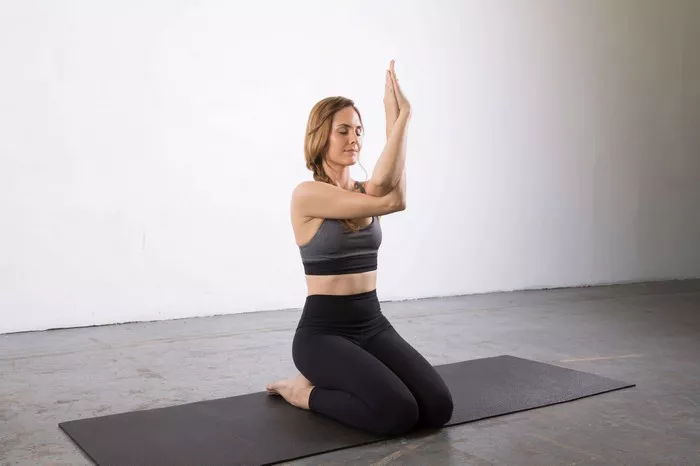Good digestion is the cornerstone of overall health. When the digestive system is functioning optimally, the body absorbs nutrients efficiently and eliminates waste effectively. However, in our fast-paced world, many people struggle with digestive issues such as bloating, constipation, and indigestion. Stress, poor diet, and lack of exercise can disrupt the digestive process, leading to discomfort and other health concerns. While medical intervention is often necessary for severe issues, many people turn to yoga to promote better digestion. Yoga, with its focus on deep breathing, stretching, and gentle movements, has been shown to alleviate digestive discomfort and support the natural functions of the digestive system.
In this article, we will explore 3 of the best yoga poses for digestion. These poses help to stimulate the digestive organs, improve circulation, and relieve tension that can hinder proper digestion. By incorporating these simple yet effective yoga poses into your routine, you can enhance your digestive health, reduce bloating, and feel more comfortable in your body. Whether you’re a seasoned yoga practitioner or a beginner, these poses can be done at home or in a class setting and require minimal equipment—just a yoga mat and your body’s willingness to move.
1. Cat-Cow Pose (Marjaryasana-Bitilasana) – A Gentle Stretch to Stimulate Digestion
The Cat-Cow pose, or Marjaryasana-Bitilasana, is a foundational yoga sequence that involves alternating between arching and rounding the spine. It is one of the best poses for digestion as it encourages the movement of the entire torso, stimulating the digestive organs and promoting the flow of energy in the body. By linking breath with movement, this pose activates the parasympathetic nervous system, helping to reduce stress and enhance digestion.
How to Perform Cat-Cow Pose
To practice Cat-Cow pose, start on all fours with your hands directly under your shoulders and your knees under your hips. Keep your spine neutral, and as you inhale, lift your chest and tailbone toward the ceiling, creating a gentle arch in your back (this is the Cow pose). As you exhale, round your spine towards the ceiling, tucking your chin and bringing your belly button toward your spine (this is the Cat pose). Move between these two positions slowly and mindfully, coordinating your breath with each movement. Practice for 1-2 minutes.
Why It’s Good for Digestion
The Cat-Cow pose encourages gentle spinal mobility and abdominal contraction, which helps stimulate the organs of digestion, including the stomach, intestines, and liver. The act of arching the back creates a mild compression of the abdomen, while rounding the spine allows for a gentle release, which improves the flow of blood and oxygen to the digestive organs. This practice can also help to release tension in the abdominal area, improving overall digestion and reducing bloating.
2. Downward-Facing Dog (Adho Mukha Svanasana) – A Full-Body Stretch That Benefits the Abdomen
Downward-Facing Dog (Adho Mukha Svanasana) is a widely practiced yoga pose that stretches the entire body, including the abdomen. It is an inversion pose that helps to increase blood circulation to the digestive organs, promoting healthy digestion and relieving discomfort. By lengthening the spine and activating the core, this pose creates space in the abdominal cavity and encourages the organs to function more efficiently.
How to Perform Downward-Facing Dog
Begin in a tabletop position, with your hands directly under your shoulders and your knees under your hips. Spread your fingers wide and press firmly into the ground. Tuck your toes and slowly lift your hips towards the ceiling, forming an inverted V-shape with your body. Keep your legs straight or slightly bent, depending on your flexibility. Ensure that your head is relaxed and your neck is aligned with your spine. Hold the pose for 20-30 seconds, breathing deeply and evenly.
Why It’s Good for Digestion
Downward-Facing Dog helps to stimulate the digestive system by gently compressing the abdominal area, which can enhance the movement of food and waste through the intestines. The inversion aspect of the pose allows fresh blood to flow to the organs in the lower abdomen, which can help alleviate bloating and constipation. Additionally, the stretch in the back and legs can relieve tension that may be contributing to digestive issues. By incorporating this pose into your daily routine, you can promote better digestion while also reaping the benefits of a full-body stretch.
3. Seated Twist (Ardha Matsyendrasana) – A Powerful Detoxifying Twist for the Abdomen
Seated Twist (Ardha Matsyendrasana) is an excellent yoga pose for digestion because it focuses specifically on the abdominal area. This twisting pose massages the digestive organs, increases circulation, and promotes the elimination of toxins. It also helps to relieve bloating, discomfort, and constipation by encouraging movement within the intestines. Regular practice of this pose can improve the efficiency of digestion and enhance overall abdominal health.
How to Perform Seated Twist
Start by sitting on the floor with your legs extended in front of you. Bend your right knee and place your right foot on the outside of your left thigh. Inhale and lengthen your spine. As you exhale, twist your torso to the right, placing your left elbow on the outside of your right knee. Keep your shoulders aligned and your chest open as you deepen the twist. Hold the position for 20-30 seconds, breathing deeply into your abdomen. Slowly release and repeat the twist on the other side.
Why It’s Good for Digestion
The Seated Twist works by gently squeezing and massaging the internal organs, which can help to release trapped air and gas in the intestines, easing discomfort. The twisting motion stimulates peristalsis (the movement of food through the digestive tract), aiding in the elimination of waste and improving bowel function. Additionally, this pose stretches the spine and promotes flexibility, which can help relieve tension that might be affecting digestion. Performing this pose regularly can encourage a smoother, more efficient digestive process.
See Also: What Are Some Fun Two-Person Yoga Poses to Try Together?
Incorporating These Poses into Your Routine
To experience the benefits of these poses for digestion, consider incorporating them into your daily or weekly yoga practice. These poses can be performed individually or as part of a gentle sequence. For best results, practice them in a calm, quiet environment where you can focus on your breath and body. As you move through each pose, try to stay mindful of your breath, and focus on how each stretch and twist feels in your digestive area.
Consistency is key when it comes to yoga and digestive health. It’s not just about doing these poses once or twice but about developing a regular practice that supports your overall health. If you have a particular digestive concern, such as chronic constipation or bloating, you may want to spend a few extra minutes on poses like Seated Twist or Cat-Cow to directly target the abdominal region.
Conclusion
In conclusion, yoga offers a variety of poses that can promote better digestion, reduce discomfort, and improve overall well-being. The three poses we’ve highlighted—Cat-Cow, Downward-Facing Dog, and Seated Twist—are simple yet effective ways to stimulate your digestive system and relieve common digestive issues. By incorporating these poses into your routine, you can encourage healthy digestion, reduce bloating, and boost your energy. Always remember to listen to your body and consult with a healthcare provider if you experience chronic digestive problems or discomfort. Yoga can be a powerful tool to support your digestive health and enhance your overall quality of life.
You Might Be Interested In:






















